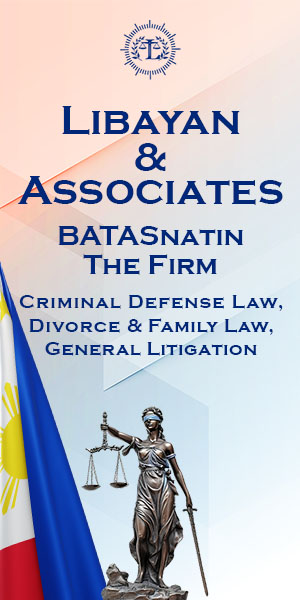STA. MARIA V. CA|FAJARDO, 285 SCRA 351- Compulsory Servitude of Right of Way
Requirements of compulsory servitude of right of way: 1) surrounded by immovables and no adequate outlet to a public highway; 2) payment of indemnity; 3) isolation is not due to the owner of the dominant estate; 4) least prejudicial (and shortest if possible)
FACTS:
Plaintiff spouses Arsenio and Roslynn Fajardo are the registered owners of a piece of land, Lot No. 124, in Bulacan.
Plaintiff's aforesaid Lot 124 is surrounded by Lot 1, a fishpond, on the northeast portion thereof; by Lot 126, owned by Florentino Cruz, on the southeast portion; by Lot 6-a and a portion of Lot 6-b owned respectively by Spouses Cesar and Raquel Sta. Maria and Florcerfida Sta. Maria, on the southwest; and by Lot 122, owned by the Jacinto family, on the northwest.
On February 17, 1992, Fajardo filed a complaint against defendants Sta. Maria for the establishment of an easement of right of way. Plaintiffs alleged that their lot, Lot 124, is surrounded by properties belonging to other persons, including those of the defendants; that since plaintiffs have no adequate outlet to the provincial road, an easement of a right of way passing through either of the alternative defendants' properties which are directly abutting the provincial road would be plaintiffs' only convenient, direct and shortest access to and from the provincial road; that plaintiffs' predecessors-in-interest have been passing through the properties of defendants in going to and from their lot; that defendants' mother even promised plaintiffs' predecessors-in-interest to grant the latter an easement of right of way as she acknowledged the absence of an access from their property to the road; and that alternative defendants, despite plaintiffs' request for a right of way and referral of the dispute to the barangay officials, refused to grant them an easement. Thus, plaintiffs prayed that an easement of right of way on the lots of defendants be established in their favor. They also prayed for damages, attorney's fees and costs of suit.
RTC and CA both found for Fajardo and granted the easement of right of way. On appeal, the Sta. Maria's allege that Fajardo failed to prove that it was not their own actions which caused their lot to be enclosed or cut-off from the road.
ISSUE:
Whether or not the plaintiffs failed to prove the third requisite or that the isolation was not caused by the plaintiffs themselves?
HELD:
The plaintiffs sufficiently proved that they did not by themselves cause the isolation.
As to the third requisite, we explicitly pointed out; thus: "Neither have the private respondents been able to show that the isolation of their property was not due to their personal or their predecessors-in-interest's own acts." In the instant case, the Court of Appeals have found the existence of the requisites. The petitioners, however, insist that private respondents' predecessors-in-interest have, through their own acts of constructing concrete fences at the back and on the right side of the property, isolated their property from the public highway. The contention does not impress because even without the fences private respondents' property remains landlocked by neighboring estates belonging to different owners.
Again, for an estate to be entitled to a compulsory servitude of right of way under the Civil Code, to wit:
1. the dominant estate is surrounded by other immovables and has no adequate outlet to a public highway (Art. 649, par. 1);
2. there is payment of proper indemnity (Art. 649, par. 1);
3. the isolation is not due to the acts of the proprietor of the dominant estate (Art. 649, last par.); and
4. the right of way claimed is at the point least prejudicial to the servient estate; and insofar as consistent with this rule, where the distance from the dominant estate to a public highway may be the shortest (Art. 650).



 Spotify
Spotify  iTunes
iTunes  AppleMusic
AppleMusic  YouTube
YouTube 


